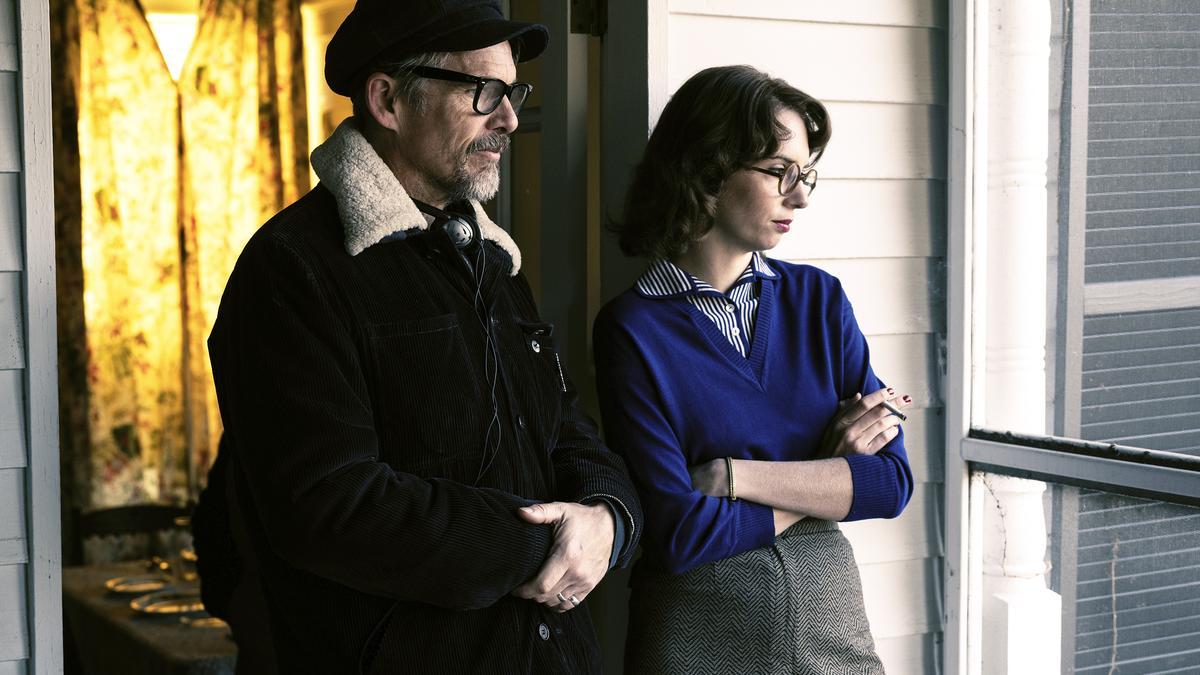
In a bold move within the cinephile community, Ethan Hawke and his daughter Maya Hawke have transformed laughter into a thought-provoking film about the life of one of America’s most complex literary figures. “Wildcat,” directed by Ethan and headlining Maya in the starring role, offers a deeply creative exploration of the life and work of renowned Southern Catholic novelist and short story writer Flannery O’Connor. The project delves into the intricacies and controversies of O’Connor’s existence, both real and imagined, marrying her famous narratives with the stark realities of her personal trials.
O’Connor’s short but impactful life came to an end in 1964 at the early age of 39 due to lupus, a disease that would later secure her a posthumous National Book Award in 1972. While her prose and biting social critiques won her acclaim, O’Connor’s legacy has been contentious, as recent examinations have brought to light the author’s racially insensitive personal correspondence and depictions of race within her literature.
Such complexities open up rich territory for storytelling, prompting father and daughter to share humorous speculations about pitching such a controversial subject to mainstream film distributors.
Ethan Hawke and Maya Hawke graced the ‘Wildcat’ premiere in New York, tranquilly navigating the trepidation of handling the legacy of a writer accused of racism with serious intent and delicate handling.
As they envision the pitch, it becomes clear that their proposal challenges mainstream expectations:
Maya quips, “We want to make a movie about an unfortunate-looking woman with lupus. She struggles with her faith and has no boyfriends.”
Ethan contrasts her brilliance and lack of success, and Maya highlights recent doubts about O’Connor’s literary standing. The punchline is Ethan’s sarcastic pitch, “Sounds like the makings of a commercial, hit movie!”
Created outside the studio system, “Wildcat” boasted a formidable ensemble including Laura Linney, Liam Neeson, Steve Zahn, and Vincent D’Onofrio, filling the world of the film with familiar faces and seasoned performers. As much a family affair as it is a creative collaboration, the Hawkes reached out to longstanding colleagues to bring the narrative to life.
For Maya, the idea for “Wildcat” surfaced while she contemplated a career in acting. With parents renowned in Hollywood—her mother is actress Uma Thurman—Maya was initially torn between acting and her passion for literature. Making a bold decision, she auditioned for Juilliard with a monologue adapted from O’Connor’s “Prayer Journal,” which she prepared with her father during his breaks from filming “The Magnificent Seven.”
Both Ethan and Maya found early inspiration in O’Connor’s work — Ethan, encouraged by his mother, and Maya, driven by her own literary zeal. They shared a fascination with O’Connor’s unapologetic exploration of faith, race, and white Christian hypocrisy. Linney, cast as O’Connor’s mother, helps depict O’Connor’s move back to Georgia following her diagnosis, capturing her domestic life and the intersection of her illness with her creative spirit.
Ethan Hawke, wary of conventional biopics in the digital age, strived for a narrative depth akin to “Raging Bull” and “An Angel at My Table,” showcasing a person’s life without prerequisite interest in their field. Striking a balance between history and art, Maya and Ethan circle hard questions: is it right to make a film about someone who has expressed prejudiced views? The struggle to confront this led Ethan to a larger reflection about confronting America’s historical wounds through storytelling. With due diligence, Maya considered whether a film inevitably celebrates its subject or merely observes it—a sentiment that resonates when depicting complicated female figures.
Ethan recalls wisdom from author James McBride on “The Good Lord Bird,” stressing the importance of representing racists without demonizing them, to reflect the real and pervasive nature of racism. After deep research and contemplation, the team committed not to shy away from the dialogue or defend O’Connor’s stance.
“Wildcat” became a source of inspiration beyond the silver screen for Maya, driving her to produce her new album, “Chaos Angel,” spurred by a potent scene with her guardian angel. A mirror to both her character and personal journey, the album embodies the themes of resistance and the pursuit of one’s better self.
At 25, Maya matched her father’s age when he starred in “Before Sunrise,” and their bond shines through as her musical talent—a source of light-hearted envy for Ethan—flourishes. Whether wrestling with an angel or the strings of a guitar, Maya’s talent and the Hawkes’ cinematic quest with “Wildcat” spotlight a resolution to engage deeper with the intricacies of the human and the artist, no matter how imperfect.










